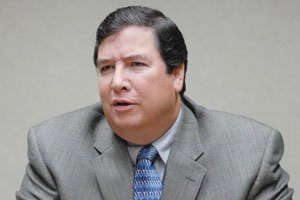The city’s proposed budget includes a hiring freeze, but it does
not call for any layoffs or wage reductions to help narrow a $6.2
million deficit, which makes cutting popular community programs and
activities hard to defend, council members said.
The city’s proposed budget includes a hiring freeze, but it does not call for any layoffs or wage reductions to help narrow a $6.2 million deficit, which makes cutting popular community programs and activities hard to defend, council members said.
Councilmember Cat Tucker took the lead at Wednesday night’s budget session, and her colleagues agreed that after they pass the budget – more or less as is – next month, they will need to make additional cuts throughout the next fiscal year.
“I appreciate that you spent a lot of time and effort, but I don’t feel like it’s enough,” Tucker told City Administrator Tom Haglund and the department heads sitting behind him. “We need wage freezes or current employee cuts. I understand that would make a big impact, but we cannot continue living beyond our means. And targeting some of our children’s programs does not make sense … What was the thought process behind some of these cuts?”
Tucker referred to Community Services Director Susan Andrade-Wax’s decision to cancel popular programs such as Kids Discover Arts and to reduce the hours of operations for the city’s youth center and other after school programs. Andrade-Wax began to quantify the cuts in dollar amounts – such as a $40,000 savings for reducing the aquatics program – but Haglund told the council staff would return with exact figures June 9, when the body will relook at the budget before approving it ahead of the next fiscal year that begins July 1. Andrade-Wax did not return messages Thursday requesting the fiscal impacts of the rest of the cuts that would go into effect in September.
Councilmember Peter Arellano repeatedly cautioned against cutting such community programs. The physician said prevention is more valuable than a later, costlier cure.
“How much are we really saving by not using some of our reserves for community programs like the aquatics program?” Arellano said. “There are folks who can’t send their kids to private camps. They depend on these programs, otherwise they’re out on the streets causing problems.”
But the hiring freeze the department heads agreed to means fewer employees to staff such programs, Andrade-Wax said. Haglund also reminded the council that the budget cuts represent what can be done immediately. The council can always lay off employees or work with unions to freeze or lower salaries in the next few months, Haglund said, but the budget needs to go through first, and the cuts represent the greatest savings possible right now.
“These are all things implementable by July 1,” Haglund said. “If we’re to talk about wage freezes or lay-offs or reduction in salaries, then we have to meet and confer with all of our bargaining units.”
But there are middle management positions that can be cut immediately, Tucker said, adding that families coping with unbalanced budgets have to make decisions this week, not next year. The new budget still runs a nearly $4 million deficit – partly because it ensures public safety and core services, Haglund said – but that figure will drop to zero by 2012 if the council makes additional cuts in the coming years. Earlier this month Co-Finance Director Cindy Murphy estimated this year’s deficit to be about $7.6 million when pressed by council members, but since then city staff have crunched tax numbers and other income to arrive at the current $6.2 million figure.
Councilman Craig Gartman broached the idea of the private sector and charities stepping up to the plate to possibly fill “fluff” spending on community programs. But Public Art Committee Chair Shirley Willard told the council that the council may have “a small rebellion” if “you take all the fun out of the city.” Keeping the fun, however, could depend on personnel cuts, Gartman said.
“There will be no money soon if we carry on like this. In the private industry, we get to this point, and we say, ‘reduce where you can,’ but the next cut is one of the most serious ones, and that’s the human,” Gartman said. “It’s not what we want to say or what we want to hear, but it’s the reality of the life.”
Mayor Al Pinheiro, who asked union representatives to attend the meeting, reminded the council that is has already committed to various future pay hikes for union employees. But the council can still “come right back to the table and start having a plan” after it passes the budget, Pinheiro said.
After Wednesday’s meeting, the president of the recently activated managers’ bargaining bloc, David Chulick, said he heard everything the council said and would take it back to members who are still assembling a game plan for the near future.
The council also rallied to reverse some cuts in the budget Wednesday night.
Gilroy Police Department Chief Denise Turner planned to sever the city’s contract with a county parole officer, but the council agreed to postpone the bulk of its chambers remodeling, worth about $100,000, and to take another $30,000 from the city’s $21 million reserve fund to continue paying for the officer.
“It’s well known tough economic times lead to crime, and this is the wrong time to cut this position,” Councilman Perry Woodward said.
Tucker also bristled at the idea of cutting the Visitor’s Bureau and the Economic Development Corporation’s budgets by 10 percent each, or $12,000 and $20,000, respectively. She said those entities make the city money, and cutting them amounted to a double hit.
When it came to revenue predictions, Councilman Dion Bracco doubted the city’s sales and property tax projections even though staff said the 4 percent increase was conservative compared to the city’s historic 8 percent increase.
“People at the outlets aren’t buying anything or at Gilroy Gardens. I only see things getting worse for the short term, and I don’t see why we should be having these rosy projections,” Bracco said. “We’re not really planning for what most families are planning for.”
In the recommended budget, Haglund calls for all 24 of the city’s vacant full-time positions remain frozen through at least 2009. There are 277 full-time city employees. In addition to the hiring freeze, 30 forecasted positions have been “defunded” through 2013 and will remain so unless needed to fulfill basic operations or until the council orders a specific position to be filled, according to Haglund. If an employee retires, that position will be frozen until the council reactivates it.
Cuts also came by delaying projects and reducing part-time employment hours and overtime pay. There was no mention Wednesday night of possibly buying a portion of the city’s water from Luke Brugnara, a property owner northwest of Gilroy who has offered to save the city more than $1 million by selling the water on his property at a heavily discounted rate compared to the water district. Council members recently indicated they will research the proposition.














